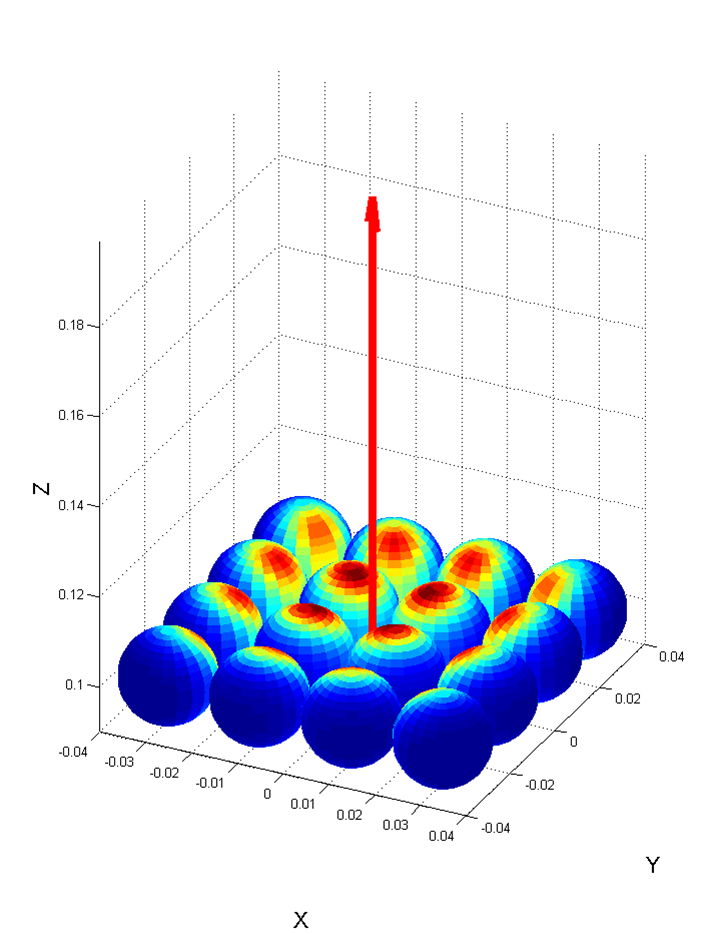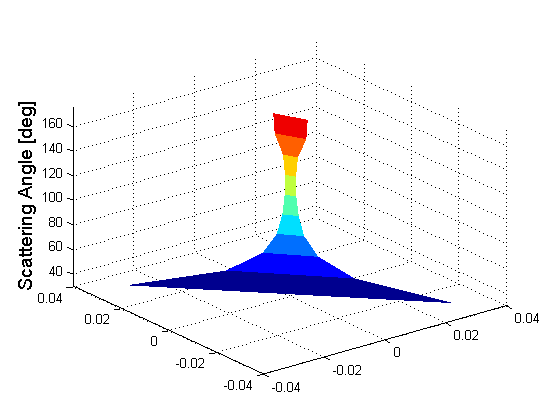When we see a laser beam, it is because the light scattered off air molecules in the atmosphere and some of it was in the direction of our eye. The distribution of the scattered light can be predicted well in many situations. In this paper, we use a Mie scattering model to invert a received light signal and then determine the laser’s location, strength and other properties.

It was found to be necessary to include the effect of polarization in order to extract the desired description of the laser. The figure below shows how the polarization vector changes with scattering angle for linearly polarized light.

This work was published in Inverse Problems in Science and Engineering: